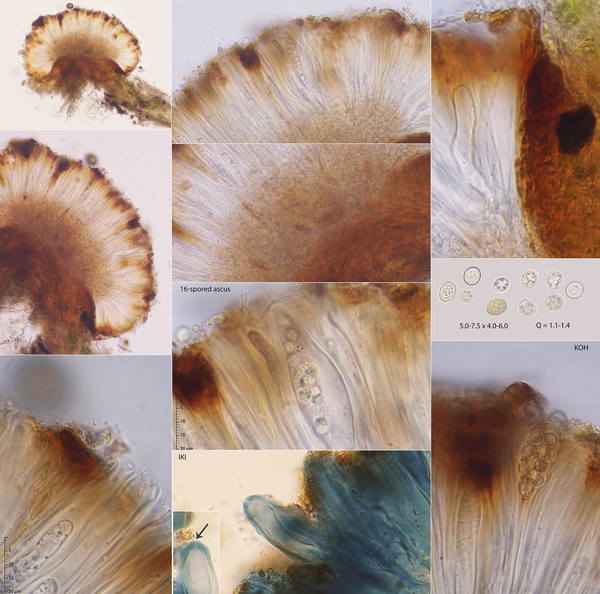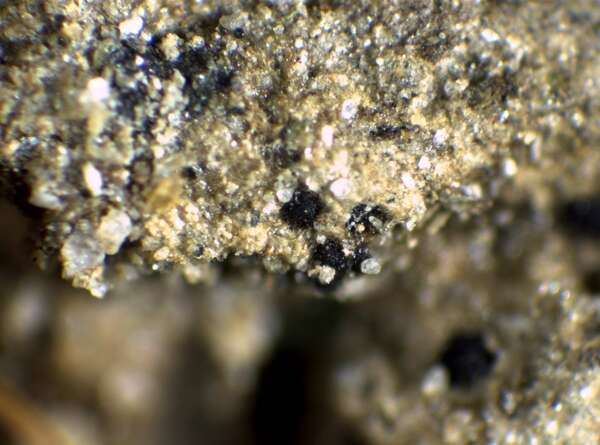Steinia geophana (Nyl.) Stein
in Cohn, Krypt.-Fl. von Schlesien, 2: 209, 1879. Basionym: Lecidea geophana Nyl. - Lichenes Scand.: 212, 1861.
Synonyms: Biatora geophana (Nyl.) Th. Fr.; Biatorella geophana (Nyl.) Rehm; Lecidea boreella Nyl.; Lecidea trichogena Norman; Pleolecis geophana (Nyl.) Clem.; Steinia luridescens Körb.
Distribution: N - TAA (Nascimbene & al. 2007b).
Description: Thallus crustose, episubstratic, pale grey to dull grey-green, thin and film-like, subgelatinous when wet, continuous, more or less ephemeral, with sparse goniocysts. Apothecia biatorine, sessile, 0.2-0.6 mm across, with a dark brown to black-brown, strongly convex, rough disc, without a distinct proper margin. Proper exciple poorly developed, of a few thread-like hyphae resembling paraphyses; epithecium reddish brown to brown, with granules not dissolving in K; hymenium colourless to brownish, 65-80 µm high, I+ pale blue; paraphyses scarce, immersed in the hymenial gel, simple, not apically thickened, 0.5-1 µm thick; hypothecium brownish, of vertically arranged hyphae. Asci (12-)16-spored, clavate-cylindrical, thin-walled, without a tholus, K/I + blue, with a distinct apical pore. Ascospores 1-celled, hyaline, globose or subglobose, 4-6(-8) x 4-6 µm, the wall c. 0.5 µm thick, without a perispore. Pycnidia rare, dark, immersed, the
conidiogenous cells elongate-ampulliform, enteroblastic. Conidia acrogenous, ellipsoid, hyaline, 1-1.5 µm long. Photobiont chlorococcoid, with ellipsoid cells. Spot tests: K-, C-, KC-, P-, UV-. Chemistry: without lichen substancesNote: an ephemeral, facultatively lichenised species of moist, slightly calciferous soil, rotten wood, small pebbles, terricolous Peltigera- and Solorina-species and plant debris, often found in rather disturbed habitats such as on earth banks along white roads and on track sides; perhaps overlooked, at least in the Alps, but certainly never common.
Growth form: Crustose
Substrata: lignum, soil, terricolous mosses, and plant debris
Photobiont: green algae other than Trentepohlia
Reproductive strategy: mainly sexual
Pioneer species
Commonnes-rarity: (info)
Alpine belt: rare
Subalpine belt: rare
Oromediterranean belt: absent
Montane belt: very rare
Submediterranean belt: extremely rare
Padanian area: absent
Humid submediterranean belt: absent
Humid mediterranean belt: absent
Dry mediterranean belt: absent
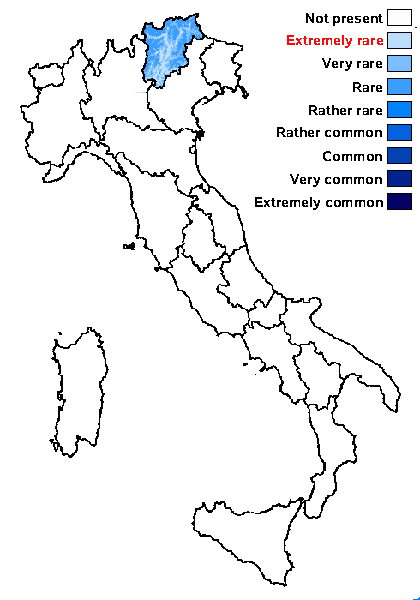
Predictive model
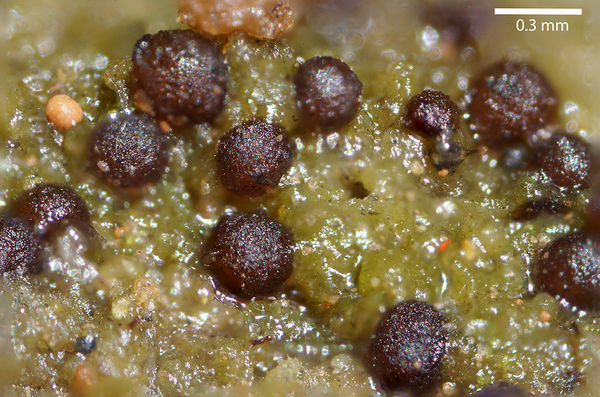
Enrique Rubio - https://www.centrodeestudiosmicologicosasturianos.org/?p=48838
Spain, Villamañán (León), 24.03.2022, on partially rotten, very moist wood of Populus alba, leg. Javier Mateos, det. Javier Etayo, ERD-9319.
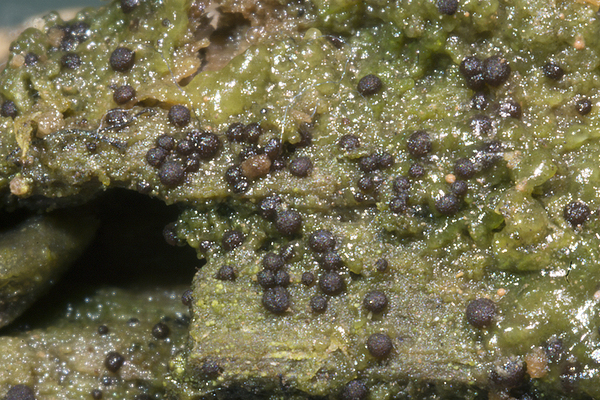
Enrique Rubio - https://www.centrodeestudiosmicologicosasturianos.org/?p=48838
Spain, Villamañán (León), 24.03.2022, on partially rotten, very moist wood of Populus alba, leg. Javier Mateos, det. Javier Etayo, ERD-9319.
Growth form: Crustose
Substrata: lignum, soil, terricolous mosses, and plant debris
Photobiont: green algae other than Trentepohlia
Reproductive strategy: mainly sexual
Pioneer species
Commonnes-rarity: (info)
Alpine belt: rare
Subalpine belt: rare
Oromediterranean belt: absent
Montane belt: very rare
Submediterranean belt: extremely rare
Padanian area: absent
Humid submediterranean belt: absent
Humid mediterranean belt: absent
Dry mediterranean belt: absent

Predictive model

Enrique Rubio - https://www.centrodeestudiosmicologicosasturianos.org/?p=48838
Spain, Villamañán (León), 24.03.2022, on partially rotten, very moist wood of Populus alba, leg. Javier Mateos, det. Javier Etayo, ERD-9319.

 Index Fungorum
Index Fungorum
 GBIF
GBIF
